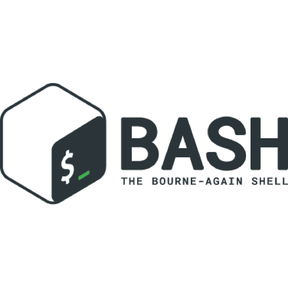If You want to build a website with Drupal at short time;
Plus, manage docker containers with Portainer.
Create rules to open ports to the internet, or to a specific IPv4 address or range.
- http: 80
- https: 443
- portainer: 9001
- phpmyadmin: 9090
- Auto Configuration and Installation
- Requirements
- Manual Configuration and Installation
- Portainer Installation
- Usage
download with
git clone https://github.com/damalis/full-stack-nginx-drupal-for-everyone-with-docker-compose.git Open a terminal and cd to the folder in which docker-compose.yml is saved and run:
cd full-stack-nginx-drupal-for-everyone-with-docker-compose chmod +x install.sh ./install.sh Make sure you have the latest versions of Docker and Docker Compose installed on your machine.
Clone this repository or copy the files from this repository into a new folder. In the docker-compose.yml file you may change the database from MariaDB to MySQL.
Make sure to add your user to the docker group.
download with
git clone https://github.com/damalis/full-stack-nginx-drupal-for-everyone-with-docker-compose.git Open a terminal and cd to the folder in which docker-compose.yml is saved and run:
cd full-stack-nginx-drupal-for-everyone-with-docker-compose Copy the example environment into .env
cp env.example .env Edit the .env file to change values of LOCAL_TIMEZONE, DOMAIN_NAME, DIRECTORY_PATH, LETSENCRYPT_EMAIL, DB_USER, DB_PASSWORD, DB_NAME, MYSQL_ROOT_PASSWORD, PMA_CONTROLUSER, PMA_CONTROLPASS, PMA_HTPASSWD_USERNAME and PMA_HTPASSWD_PASSWORD.
LOCAL_TIMEZONE=to see local timezones
DIRECTORY_PATH=pwd at command line
and
cp ./phpmyadmin/apache2/sites-available/default-ssl.sample.conf ./phpmyadmin/apache2/sites-available/default-ssl.conf change example.com to your domain name in ./phpmyadmin/apache2/sites-available/default-ssl.conf file.
Firstly: will create external volume
docker volume create --driver local --opt type=none --opt device=${DIRECTORY_PATH}/certbot --opt o=bind certbot-etc docker compose up -d then reloading for webserver ssl configuration
docker container restart webserver The containers are now built and running. You should be able to access the Drupal installation with the configured IP in the browser address. https://example.com.
For convenience you may add a new entry into your hosts file.
docker volume create portainer_data docker compose -f portainer-docker-compose.yml -p portainer up -d manage docker with Portainer is the definitive container management tool for Docker, Docker Swarm with it's highly intuitive GUI and API.
You can also visit https://example.com:9001 to access portainer after starting the containers.
The docker ps command only shows running containers by default. To see all containers, use the -a (or --all) flag:
docker ps -a You can start the containers with the up command in daemon mode (by adding -d as an argument) or by using the start command:
docker compose start docker compose stop To stop and remove all the containers use the down command:
docker compose down to remove portainer and the other containers
docker rm -f $(docker ps -a -q) Use -v if you need to remove the database volume which is used to persist the database:
docker compose down -v to remove external certbot-etc and portainer and the other volumes
docker volume rm $(docker volume ls -q) Copy all files into a new directory:
You can now use the up command:
docker compose up -d https://docs.docker.com/engine/reference/run/
You should see the "Hello, world!" page in your browser. If not, please check if your PHP installation satisfies Drupal's requirements.
https://example.com add or remove code in the ./php-fpm/php/conf.d/security.ini file for custom php.ini configurations
https://www.php.net/manual/en/configuration.file.php
You should make changes custom host configurations ./php-fpm/php-fpm.d/z-www.conf then must restart service, FPM uses php.ini syntax for its configuration file - php-fpm.conf, and pool configuration files.
https://www.php.net/manual/en/install.fpm.configuration.php
docker container restart drupal add and/or remove drupal site folders and files with any ftp client program in ./drupal/webapp folder.
You can also visit https://example.com to access website after starting the containers.
add or remove code in the ./webserver/templates/nginx.conf.template file for custom nginx configurations
https://docs.nginx.com/nginx/admin-guide/basic-functionality/managing-configuration-files/
ADVANCED OPTIONS -> Host: database
https://mariadb.com/kb/en/configuring-mariadb-with-option-files/
if there isn't these lines, Edit Drupal settings file: ./drupal/sites/default/settings.php and add these lines at the bottom of the file:
$settings['redis.connection']['host'] = 'redis'; $settings['redis.connection']['port'] = 6379; $settings['cache']['default'] = 'cache.backend.redis'; $settings['redis.connection']['base'] = 8; Varnish Server Hostname: varnish
Varnish Server Port: 8080
Scheme: http
This link is to complete configure Varnish
All necessary changes to sites/default and sites/default/settings.php have been made, so you should remove write permissions to them now in order to avoid security risks.
chmod 655 ./drupal/sites/default/settings.php You can add your own custom config.inc.php settings (such as Configuration Storage setup) by creating a file named config.user.inc.php with the various user defined settings in it, and then linking it into the container using:
./phpmyadmin/config.user.inc.php You can also visit https://example.com:9090 to access phpMyAdmin after starting the containers.
The first authorize screen(htpasswd;username or password) and phpmyadmin login screen the username and the password is the same as supplied in the .env file.
This will back up the all files and folders, once per day, and write it to ./backups with a filename like backup-2022-02-07T16-51-56.tar.gz
50 23 * * * find ${DIRECTORY_PATH}/backups/backup* -type f -mtime +1 | xargs rm 00 01 * * * tar -czvf ${DIRECTORY_PATH}/backups/'backup-example.com-'$(date +"\%Y-\%m-\%dT\%H-\%M-\%S")'.tar.gz' --exclude='backups' ${DIRECTORY_PATH} 